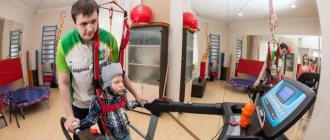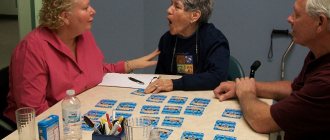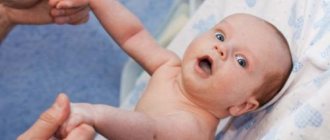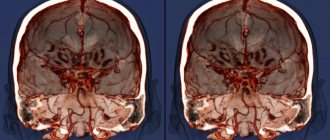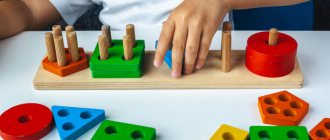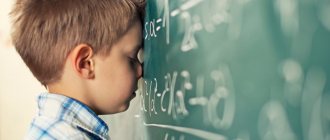INFLUENCE OF EXERCISES ON CHILDREN’S HEALTH
Therapeutic exercise has a positive effect on the body, muscles begin to work, tissues become stronger. During exercise, metabolic processes are regulated, the functioning of the brain and cardiac system improves.
The treatment course for cerebral palsy should include:
- Massage;
- exercise therapy;
- Manual therapy;
- Hardening.
The program is developed for each child on an individual basis. Activities such as: playing with a ball must be present; relaxation exercises; in a sitting and lying position. Stimulating exercises are also carried out.
How does gymnastics affect the health of children with special needs?
5 minutes
Published: February 19, 2016
| (0) |
Gymnastics in a recreational form is one of the best ways to restore and improve the health of children and adults, used in medicine in the form of therapeutic physical training.
Gymnastics has a number of advantages, thanks to which doctors prescribe it for medicinal purposes. Firstly, gymnastics consists of a huge variety of exercises, including with apparatus and objects that allow you to train different muscle groups. Gymnastics promotes the simultaneous development of all human physical abilities - coordination, strength, endurance, speed, flexibility. Exercises in gymnastics are strictly dosed; the trainer can set different frequencies and intervals for their execution. Gymnastics training is always very exciting and varied.
The combination of these factors gives gymnastics very important healing properties that speed up the process of a person’s recovery, be it poor posture, recovery from injury, or various developmental features.
In general, therapeutic exercises are prescribed by doctors for a wide range of diseases: postural disorders, clubfoot, flat feet, rickets, attention deficit disorder (with hyperactivity and hypoactivity), autism, cerebral palsy (CP), Down's disease and much more.
Health-improving gymnastics is of particular importance for children with developmental disabilities. In the process of training, they develop correct motor skills, they learn to control their body and feel it well in space, muscle tension decreases, the child learns attentiveness and concentration, and his psychological state improves.
The basic principles of therapeutic exercises for children are:
1) an individual approach and a special training plan developed by a doctor in accordance with the child’s illness;
2) regularity, systematicity, continuity of classes;
3) gradual increase in loads.
For children with cerebral palsy, gymnastics will help reduce muscle hypertonicity, improve coordination of movements, learn correct motor actions and the ability to relax muscles, develop flexibility and mobility in joints, and learn balance. With cerebral palsy, it is important to start classes with the child as early as possible. This is due to the developmental characteristics of the child’s brain, its plasticity and ability to compensate for impaired functions.
People suffering from autism develop poorly physically, they are haunted by a feeling of constant anxiety, nervousness, fears, and also have problems socializing in society.
For children with autism and Down syndrome, new, varied and interesting exercises are very important that will captivate them, develop physically, and also teach them the ability to concentrate, facilitate the process of social adaptation and give positive emotions.
Gymnastics will be very useful for them, as it will allow them to perform all the most important tasks to improve their health. Among the most effective are coordination exercises, and in particular: overcoming an obstacle course, climbing a wall bars, exercising on gymnastic equipment (parallel bars, rings), various jumps, including on a trampoline, learning balance (walking on a balance beam), playing ball, training in the accuracy of performing simple motor actions (correct steps, running, jumping).
Classes must be carried out under the supervision of doctors and in accordance with their recommendations for training.
Nikolai Korotaev, a sports doctor and vice-president of the International Association of Health Practices (IASOP), shared his expert opinion with us and told us how gymnastics affects the health of children with special needs.
– What changes do doctors note in children under the influence of gymnastics?
– There are a large number of observations both in Russia and abroad. Back in the 80s, it was known that children who do not engage in gymnastics are more likely to suffer from flat feet and spinal curvatures. If you do regular gymnastics, the disorders identified by the orthopedist are corrected within one to two years.
There are also statistics showing that more than half of children studying in grades 4, 5, 6 have problems with posture. If they do gymnastics, then at least 2/3 of the children will correct it, strengthen the muscles of the back, abdomen, and chest.
– How does gymnastics affect the health of children in case of more serious illnesses?
– There have been many recorded cases where gymnastics helped correct congenital disorders, such as cerebral palsy, torticollis, and clubfoot. For such diseases, gymnastic exercises are first used as therapeutic physical education, and later as sports and recreational activities.
Gymnastics, for example, unlike outdoor games, has a very important property - the dosage of movements. The training process is easier to manage; you can set a certain pace, repetition frequency, and combination of movements. Thanks to this, it is possible to correct disorders of the musculoskeletal system.
– In foreign countries there is a whole area of gymnastics for children with Down syndrome. How is it useful for them?
– In any neurological disorder, coordination always suffers. For a person with developmental disabilities, be it childhood neurosis, Down's disease or other pathologies, the creation of a new motor dominant is always positive. Instilling the skills of regular gymnastics will contribute to the creation of a new dominant that will overlap the intended pathology.
This process occurs as follows: in a child with developmental disorders, there is a focus of the disease in the cerebral cortex, but motor activity creates another focus of excitation, which has a positive effect on the first one, it reduces and covers the focus of the disease. This was also proven by Russian scientists at the beginning of the 20th century.
At the European Gymnastics Center, children can exercise for rehabilitation purposes. The training is based on recreational gymnastics, in a playful way, and is aimed at achieving high-quality results, which is primarily necessary for children with developmental disabilities. Our gym is equipped with modern, safe and bright equipment, interesting obstacle course modules, children's equipment, trampolines and a foam play pit with colored cubes, where children can exercise with great joy and health benefits.
If you have any questions, you can consult with our specialists by calling +7 (495) 477 32 69 or leaving a request for a free trial lesson.
Sign up for a free lesson
All articles
COMPLEXES OF EXERCISES
Exercise therapy programs for children with cerebral palsy include activities such as:
- Position. Fixing legs and arms in splints;
- Muscle stretching. Swinging of legs and arms with gradual acceleration;
- Muscle relaxation. Fixing the limbs one by one. As a result, the increased tone is weakened and the number of involuntary movements and twitches decreases;
- Walking;
- Flexion and extension of joints with simultaneous muscle massaging;
- Climbing along an inclined surface (instructor helps). The exercise trains the child’s abs and legs and teaches the body well to maintain balance;
- Endurance training.
When diagnosed with spastic diplegia, exercises should be accompanied by continuous movement.
Exercise therapy for cerebral palsy: features of the technique
Therapeutic physical education for children with cerebral palsy can improve the patient’s condition and cope with certain problems. Exercise therapy for cerebral palsy solves several problems:
- general strengthening and healing of the body;
- strengthening weak muscles;
- normalization of blood circulation and metabolism;
- development of movement coordination;
- treatment of associated disorders, such as impaired mobility of the spine or its curvature;
- teaching the patient household skills and self-care;
- knowledge of elementary labor activity.
It is important to start exercise therapy for cerebral palsy after birth, since in this case the likelihood that the damaged nervous system will be able to perform its functions increases.
Instructors select complex therapy for cerebral palsy that will help stimulate motor activity.
THE ROLE OF MASSAGE IN MEDICINE
Massage for cerebral palsy in children is used as an assistant, but not the main treatment. This is an important element in exercise therapy for children, helping to normalize blood flow, normalize metabolic processes, and relieve spasms. There are 3 types of massage to treat the musculoskeletal system:
- Classic
- Segmental
- Spot.
After familiarizing yourself with each method in the exercise therapy program, the baby’s parents can do it themselves at home. This massage is also taught in courses.
Basically, there are several manipulations that have a beneficial effect on the child’s body.
- Stroking without interruptions – relaxes the muscles;
- Felting – affects large areas;
- Skating is effective for the hip and shoulder joints;
- Intermittent stroking – maintains tone;
- Rubbing with the “outer” palm – stimulates the muscles on the back, buttocks, and thighs;
- Effleurage.
What is the essence of the method
A complex of mechanical effects on tissue can reduce the negative consequences of cerebral palsy. Although complete cell restoration is impossible, the child's body is capable of self-healing. Thus, special massage techniques, as well as physical exercises, make it possible to achieve a certain effect.
The start time of the procedures is very important here. The sooner you start therapeutic massage, the higher the likelihood of a positive effect. Massage can reduce reflex excitability of muscles, reduce the development of contractures, improve blood circulation in the body, etc. All this has a positive effect on the child’s health.
At the same time, attending expensive courses is not the only way out of this situation. Many parents take training courses in restorative massage for exercise therapy and cerebral physical therapy, which gives them the opportunity to independently carry out such procedures.
POOL FOR CHILDREN WITH Cerebral Palsy
Children love water and a baby with cerebral palsy is no exception. Water procedures should not last more than 30 minutes. Muscles do not need overwork. Classes should be regular, preferably on the same day. One-time visits to the pool will not bring any results. All exercises in water are carried out gradually, in combination with other elements.
In any exercise therapy program for children with cerebral palsy, there is a lesson on interaction with water. Tactile sensation is important because babies learn new things.
Types of complex exercises
Exercise therapy programs for people with cerebral palsy include several classes, which include:
- Step-by-step muscle stretching, for this you should swing the upper and lower limbs of the body with smooth acceleration.
- Fixation of arms and legs with splints in one position.
- Relaxing exercises for muscles. It is necessary to fix the limbs one by one. As a result, the high muscle tone is weakened and the number of chaotic swings and supports is reduced.
- Walking. It can be done in one place or carried out around the room. Thus, the child learns to walk correctly.
- Smooth extension and flexion in the joint area with muscle massaging.
- Incline climb. This exercise is carried out only with the help of an instructor. This procedure trains the leg and abdominal muscles well, and also teaches kids how to maintain balance.
- Endurance exercises (trampoline, jump rope, tunneling).
Important point! The entire procedure takes place only under the guidance of a physical therapy instructor for children with cerebral palsy.
